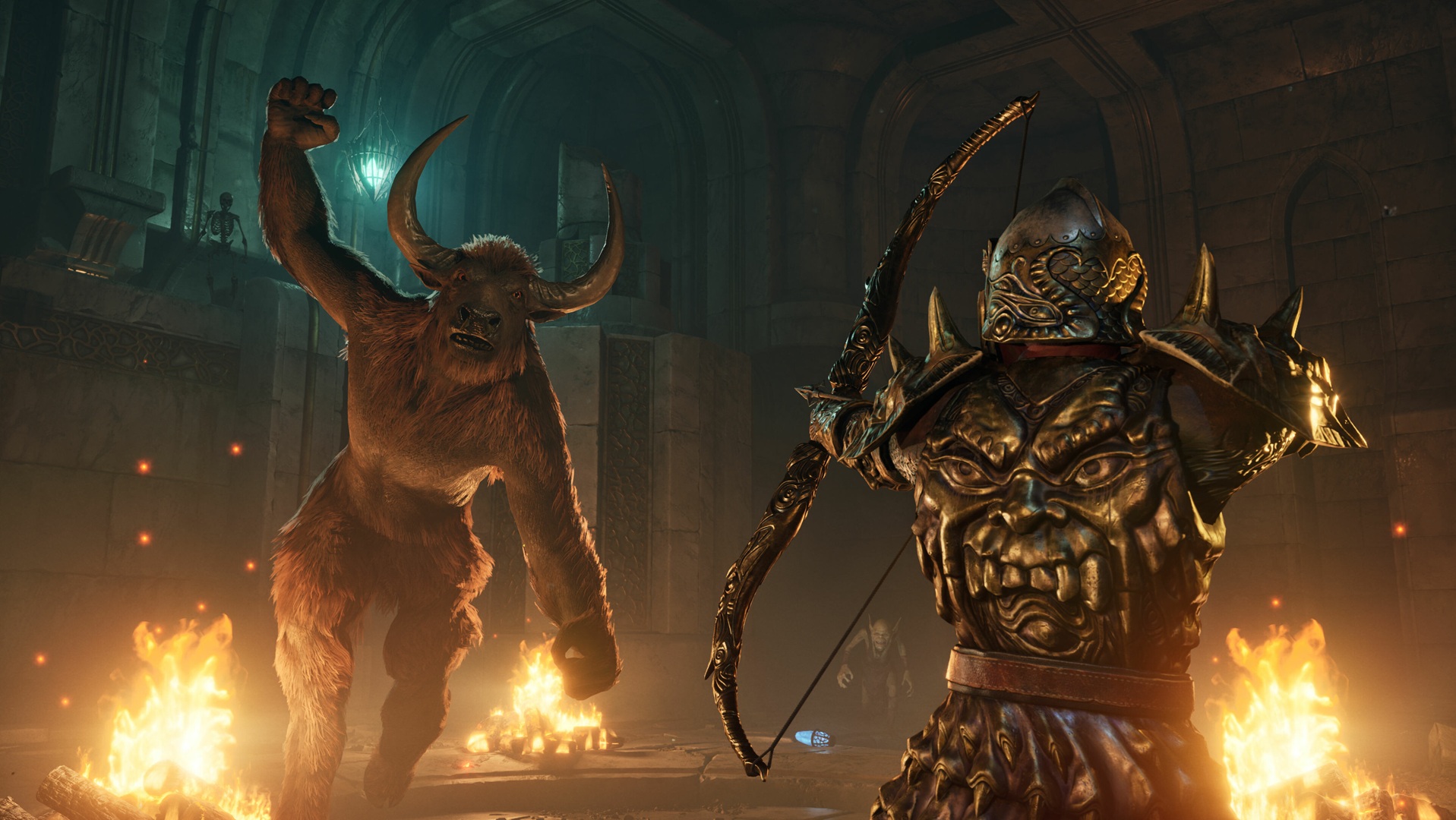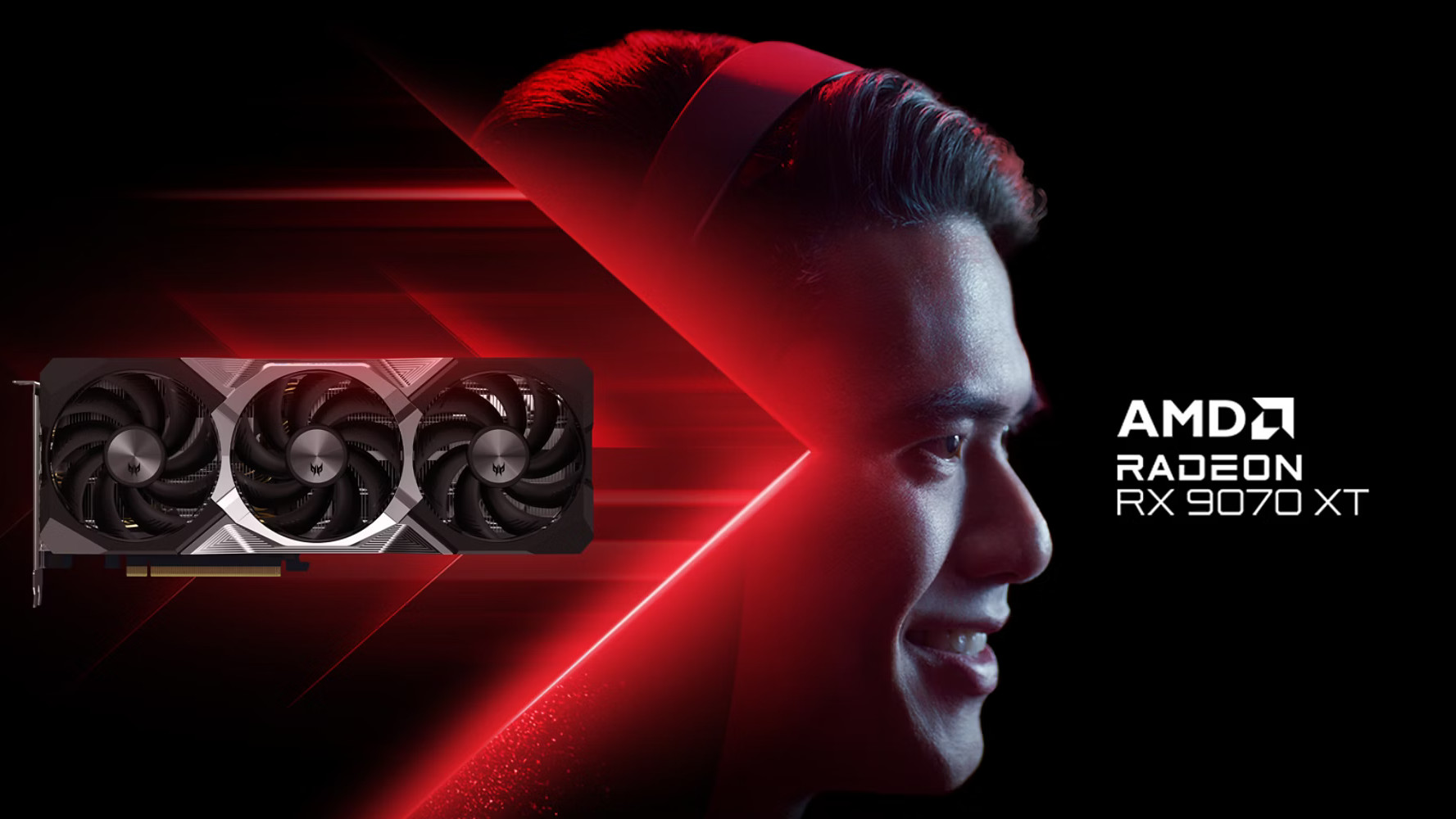
Launch day has arrived! AMD's Radeon RX 9070 XT and RX 9070 are set to go on sale at 9 AM EST on March 6, and I'm keeping a close eye on US and UK retailers.
As of 8:22 AM, I'm still not seeing listings live on US retailers like Best Buy, Newegg, and Amazon, but they should be appearing shortly.
In the UK, Overclockers notably has RDNA 4 listings up, and Scan is full of pre-built PCs with the new Radeon GPUs. Standalone cards should be arriving in the next little while.
The two new mid-range RDNA 4 GPUs represent a significant upgrade over the previous RDNA 3 hardware, bringing increased raw power, improved ray tracing, new FSR 4 capabilities, and more.
AMD's Radeon RX 9070 XT is the more expensive card, with its $600 MSRP (about £570); the RX 9070 is set at $550 (about £520).
I'm expecting the new AMD GPUs to sell out despite promises of wide availability; that's why I've put together this guide to hopefully help you land the new hardware ASAP.
Here are the best retailers to check out during today's RX 9000 launch.
Recent updates
March 6, 2025, 8:22 AM EST: It's RX 9000 launch day, and I'm watching all major retailers for availability and pricing. — Cale Hunt
Where to buy AMD RX 9070 XT and RX 9070 in US: Quick links
- Best Buy: RX 9070 XT and RX 9070 GPUs from XFX are now listed.
- Newegg: Expect a mix of RX 9070 XT and RX 9070 GPUs at launch.
- B&H: Typically has new GPUs on launch day.
- Amazon: Usually has options pop up in the days following launch.
Where to buy AMD RX 9070 XT and RX 9070 in UK: Quick links
- Overclockers UK: Already has RX 9070 and 9070 XT listings available.
- Scan: Mostly pre-built PCs so far, but expect RX 9070 and 9070 XT GPUs on launch day.
- Ebuyer: No listings yet, but should appear closer to launch.
- Amazon UK: Same deal as Amazon US, with listings usually appearing after launch.
AMD RX 9000 review roundup
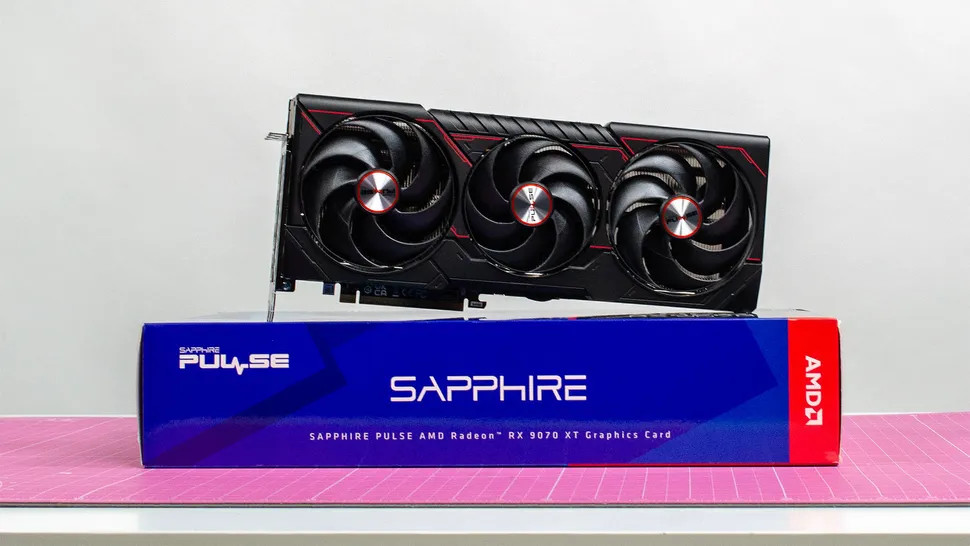
AMD's RDNA 4 review embargo was lifted on March 5, and the RX 9000 reviews are largely positive.
Those of you holding out for official performance numbers shouldn't be disappointed, especially with NVIDIA's RTX 5070 notably floundering with unimpressive results.
Here's a quick look at some of the notable reviews live now.
- TechRadar (90%): "AMD kicks off its latest generation of graphics cards with a stunning release in the AMD Radeon RX 9070 XT, delivering RTX 4080-levels of gaming performance at half that card's launch MSRP. While not perfect and not really a card for creative workers or AI research, for the gamers out there who have been...disappointed...by Nvidia's most recent RTX 50 series cards, the RX 9070 XT is nothing short of the graphics card everyone's been asking for—and you might even be able to find it in stock and within spitting distance of its MSRP."
- Hardware Unboxed: "Overall, what's on offer here in the current market is very good and worthy of recommendation. [...] It's offering almost 30% better value; you'd be mad not to buy it. But the other conclusion being, if the 5070 Ti manages to drop down to the MSRP, then the 9070 XT becomes 20% cheaper to purchase, and in terms of cost-per-frame it's just 15% better value."
- Gamers Nexus: "The 9070 XT and the 5070 Ti go back and forth a lot depending on the game, especially in rasterization; ray tracing, NVIDIA still holds an advantage. [...] At 4K rasterized without RT, for the recap, the 9070 XT and the 5070 Ti are often within 6% of each other on either side. [...] There's instances where the 9070 XT is getting really close to the 4080 Super."
- TechSpot (85%): "As things stand, the Radeon RX 9070 XT is a strong offering that we expect will sell extremely well at $600. However, whether that price holds long-term is questionable. We've also heard from multiple sources that supply is excellent. If that's the case, then AMD may end up selling more 9070 XT units than Nvidia has sold 5090, 5080, 5070, and 5070 Ti units combined – which would be crazy, and on that bombshell, we'll end this review right here."
- TweakTown (94%): "When it comes to the Radeon RX 9070 XT, the $599 price point, alongside the performance of the GeForce RTX 5070 Ti and GeForce RTX 4080 SUPER, makes it the GPU to get in 2025. You would have had to pay close to 40% more for this level of performance a year ago. The real kicker, though, is that ray-tracing performance is right up there. The only thing missing is the widespread adoption of FSR 4 and AMD's delivery of Path Tracing technologies in an actual game we can play."
- Engadget (82%): "AMD’s Radeon 9070 is a solid midrange GPU with excellent support for 1440p gaming and a bit of 4K. It has better ray tracing support than before, and it finally has AI upscaling to compete with NVIDIA’s DLSS."
How much do AMD Radeon RX 9000 GPUs cost? RDNA 4 pricing explained.
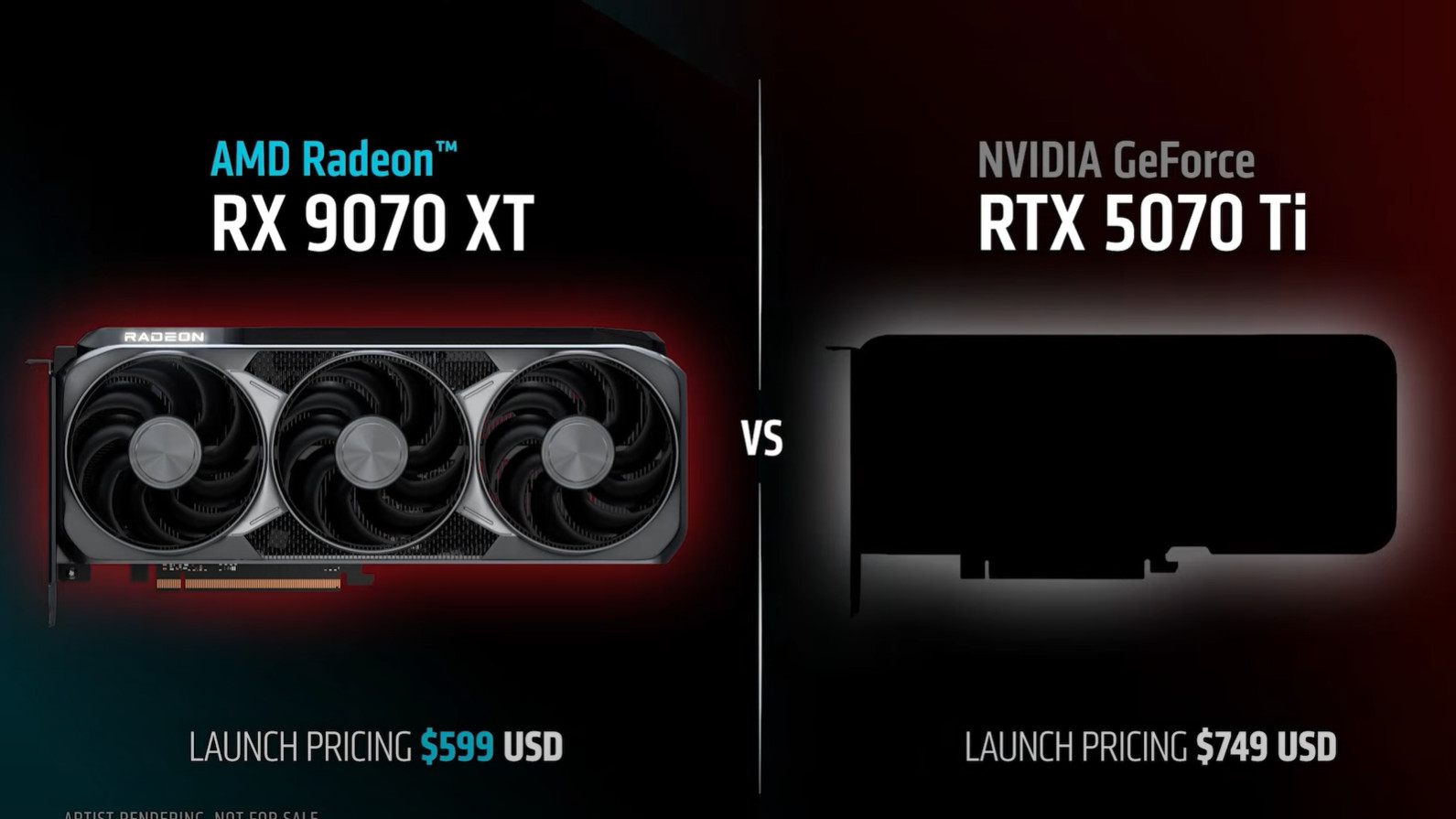
AMD seriously undercut NVIDIA's $750 RTX 5070 Ti with its $600 RX 9070 XT competitor, and the XT version should be the more popular card on launch day.
Both the NVIDIA RTX 5070 — which is expected to launch a day ahead of the new Radeon cards on March 5 — and AMD's RX 9070 have a $550 MSRP.
Whether or not third-party manufacturers stick to the MSRP set by AMD remains to be seen.
NVIDIA has notably suffered severe stock shortages with the three RTX 5000 GPUs it has so far launched, and the MSRP seems to have only been a light suggestion.
The RTX 5070 Ti, despite a $750 MSRP, is approaching $1,000 at major retailers before any scalping, and there's not actually any stock to sell.
AMD unveiled its RDNA 4 GPUs with promises of wide availability on March 6. Even if the MSRP isn't met by third-party manufacturers, you should expect to see cheaper prices from Team Red compared to Team Green.
Should you buy an AMD Radeon RX 9000 GPU?
Despite worries that AMD would bungle its RDNA 4 announcement, the information shared in the official RX 9000-series presentation bodes well for the Radeon division.
Most of us were waiting to see how AMD priced its cards, and the revelation that the RX 9070 XT comes in at $150 cheaper than the RTX 5070 Ti is great news.
While I'm waiting for third-party reviews to share their performance findings, the graphs AMD shared point to the RX 9070 XT's performance as being comparable to the RTX 5070 Ti.
Indeed, the standout news from AMD's presentation is that the RX 9070 XT only drops about 2% in raw performance at a 4K resolution.
AMD, of course, cherry-picked the games it used to test the two GPUs, but with a mix of popular and demanding games on the chart, it's easy to see the improvements that AMD has made to its RDNA 4 architecture.
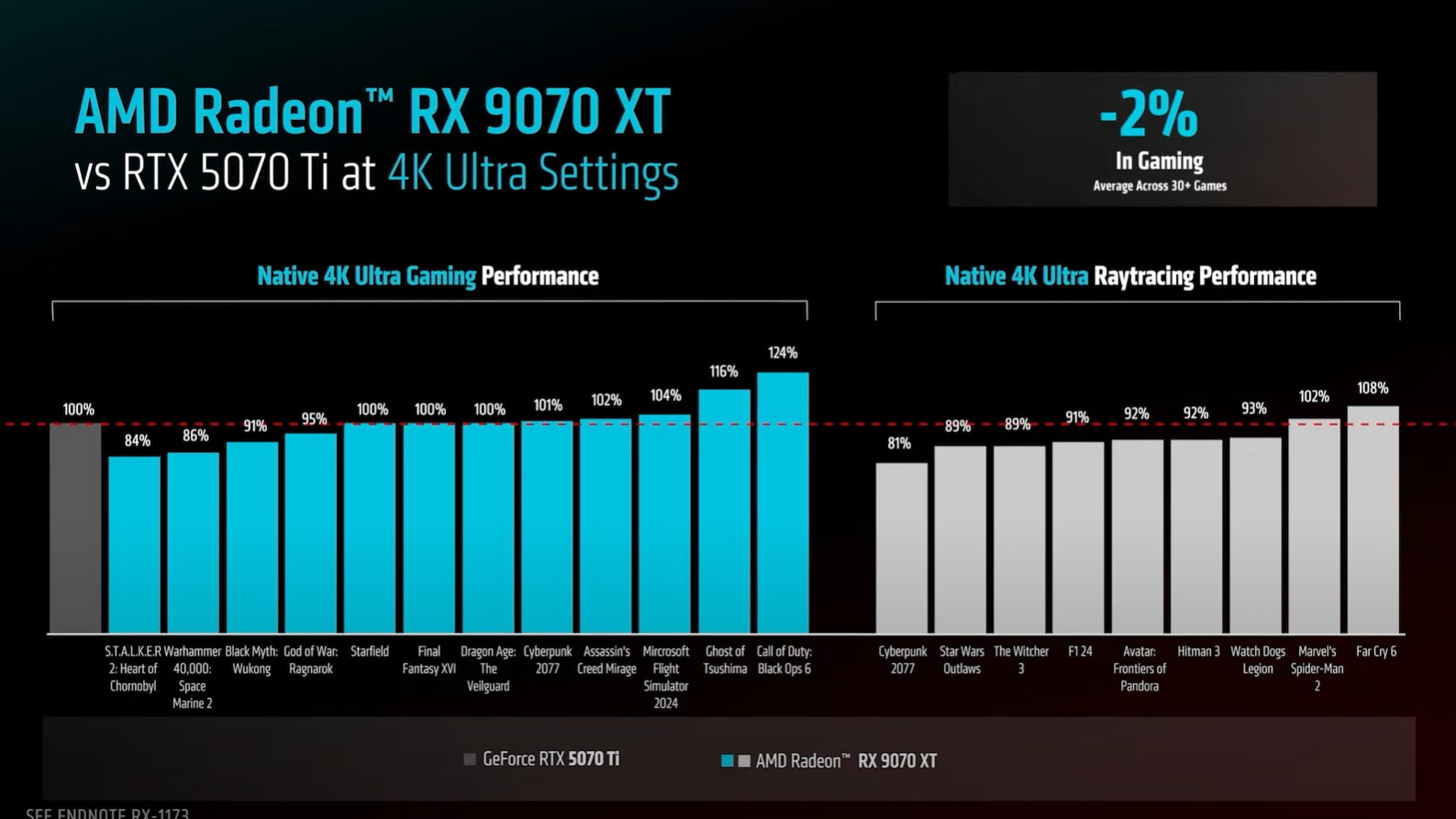
The graph above also shows that AMD continues to lag behind in ray tracing performance, but that's not much of a surprise.
NVIDIA has long been the go-to hardware for RT enthusiasts, and that section of the market should probably stick with Team Green.
However, for someone like me who doesn't care as much about ray tracing performance, the RX 9070 XT is looking quite attractive, and I'll be on the frontlines attempting to land a new GPU at the March 6 launch.
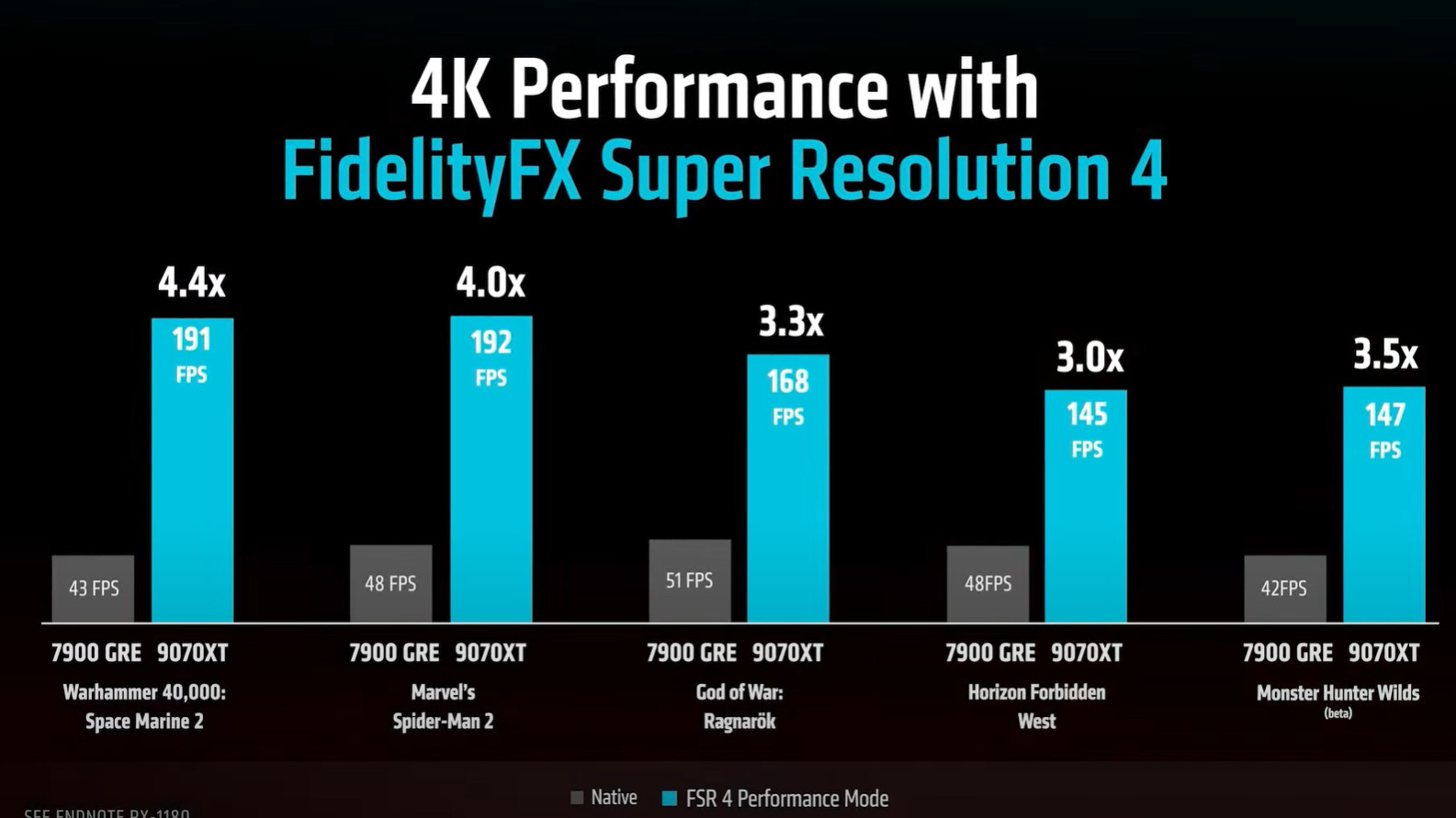
There's also the matter of AMD's new FidelityFX Super Resolution 4 (FSR 4) providing a much more significant performance boost compared to FSR 3.
AMD made the switch to machine learning for FSR 4, and the graph above demonstrates the performance gains available with the new upscaling technique.
Not only can FSR 4 quadruple frame rates in some games compared to the last-gen RX 7900 GRE, but it's also now much better at providing small but high-quality details, a weakness with FSR 3.
By all means, the Radeon RX 9070 XT and RX 9070 should be the right choice for plenty of gamers who'd rather avoid the issues NVIDIA's had, including melting power cables, faulty drivers, missing ROPs, and more.
Get the Windows Central Newsletter
All the latest news, reviews, and guides for Windows and Xbox diehards.

Cale Hunt brings to Windows Central more than eight years of experience writing about laptops, PCs, accessories, games, and beyond. If it runs Windows or in some way complements the hardware, there’s a good chance he knows about it, has written about it, or is already busy testing it.

